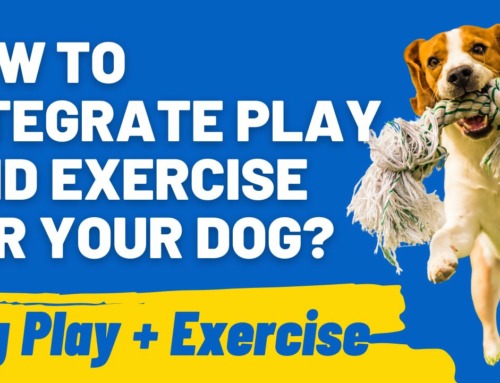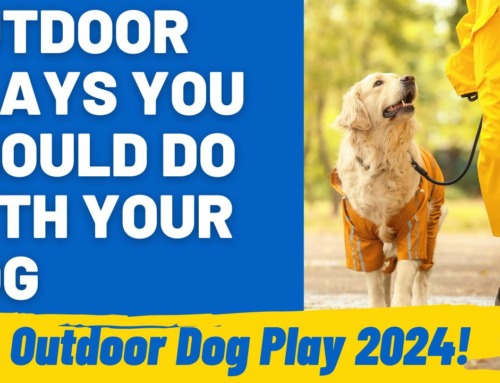Looking for a fun and active way to keep your dog healthy? Consider getting involved in canine agility training!
Agility is a popular and dynamic dog sport that involves a course of obstacles that your dog navigates with your direction. It’s not only a great workout for your pup but also strengthens your bond as you work together to complete the course.
Here’s a handy guide on agility training for dogs to help you get started!
Understanding the Basics: What Is Canine Agility?

Source: Unsplash
Canine agility, a sport that began in the UK, challenges dogs to navigate a course of obstacles on their handler’s cues. Handlers guide their dogs using only their voice, hand signals, and movement — no touching the dog or the equipment is allowed.
Courses typically feature jumps, tunnels, weave poles, pause tables, and contact obstacles like seesaws. Depending on the competition’s organizers, hoop jumps and crossovers may also be included.
From laid-back local events to international championships, agility competitions offer a fun and engaging way to keep dogs physically fit and mentally active.
Selecting the Right Equipment for Agility Training

Source: Unsplash
You can easily source canine agility equipment online, but there are certain factors you have to consider when choosing.
We have listed some of the most common equipment below, as well as how to find the right one for your dog.
| Equipment Type | Description | Key Features to Consider |
| Tunnels | Long tubes or chutes for agility training. | Durability, smooth interior. |
| Jumps | Obstacles dogs leap over or jump through. | Adjustable height, easily displaced. |
| Weave Poles | Vertical poles the dog weaves through. | Even spacing, firm ground placement. |
| Pause Table | A raised platform where the dog must pause. | Non-slip surface. |
| Contact Obstacles | Includes seesaw, A-frame, and dog walk. | Stability. |
Step-by-Step Guide to Teaching Your Dog Agility Skills

Source: Unsplash
As promised, we’re here to guide you in training your dog for agility. Here’s a series of steps you can follow.
Step 1. Focus on attention
Your dog should learn how to focus on you amidst distractions. To help them pay attention, you may use treats or toys like our Hide’n’Treat Puzzle Blocks for rewards.
Step 2. Teach obedience
To maintain control over your dog during agility competitions, basic obedience training is crucial. Teach your dog how to “sit,” “stay,” and “run,” among others.
Step 3. Teach new tricks
Aside from basic obedience, teach your dog new tricks to improve their cognitive ability. You can have them touch your hand using their nose or run around in circles or figure 8.
Step 4. Assess the dog’s flexibility and fitness
Before starting the actual agility training, assess your dog’s flexibility and fitness. Bring them to the vet for health checks and engage them in dog agility drills to improve their flexibility.
Step 5. Work on your handling skills
Aside from preparing your dog, you should also prepare yourself, particularly how you will direct your pooch during competitions. Work on your body language and cues and ensure your dog understands their meaning.
Step 6. Work on your dog’s body awareness
To succeed in an agility competition, your dog should have good body coordination. This can be achieved if they know how to use and control their rear. Engage them in exercises that can improve how they work with their back end.
Step 7. Introduce easy obstacles
Gently introduce your dog to low-impact obstacles. By gently, we mean not forcing your puppy if it’s not yet ready. Try a gradual introduction until they’ve gained confidence.
Step 8. Teach jumping
Start introducing your dog to jumps. Use lower obstacles for them to jump over for the first few tries to build their muscle strength and form.
Step 9. Start on tunnels
Some dogs are apprehensive about entering tunnels for the first time, so you must prepare treats and toys to lure them in. Eventually, they’ll be more comfortable passing through the tunnels independently.
Step 10. Introduce weaving poles
Weaving poles may be challenging for your dog initially, so try to space the poles widely apart for their training. Bring the poles closer as they learn their way around them.
Step 11. Teach your dog how to pause
Agility competitions not only involve constant movement and activity but also pausing. Teach your dog how to stay still on a pause table. Have them sit or lie down briefly and then gradually increase the duration.
Step 12. Put everything together
Once your dog has mastered each obstacle, combine them to make a sequence. This signals the intensive preparation for an agility competition.
Safety First: Tips for a Secure and Injury-Free Training

Source: Unsplash
Agility training is widely regarded as safe for dogs, but it’s important to proceed with care to avoid accidents.
Before starting agility exercises, it’s vital for your dog to warm up to increase blood flow and reduce the risk of muscle injuries.
Cooling down after training is just as important to help your dog’s heart rate return to normal and to support injury prevention, contributing to better overall recovery.
In addition to warm-ups and cool-downs, ensuring the safety of your dog during agility training involves using proper equipment, keeping sessions brief, training in a secure environment, and taking precautions in hot weather.
Setting Up an Agility Course at Home

Source: Unsplash
You don’t have to enroll your pup in dog agility courses immediately should you decide to have them participate in this canine sport. You can actually set up an agility course at home!
Start by measuring the space available in your home so you can identify the equipment that will fit. After which, set up basic obstacles like jumps and tunnels. Ensure that these equipment are securely anchored so they won’t tip or topple over.
After you’ve introduced the basic obstacles to your dog, you can then create a layout or a sequence for better flow and transition. You can also configure the equipment to increase the complexity of the activity for your dog.
When planning all these, it’s vital that you include safety features such as non-slip surfaces, cushion falls, splinter-free equipment, etc. You should also keep in mind that this should be fun for your dog, so keep the layout of the obstacles interesting.
FAQs About Canine Agility Training
What Age Should Dogs Start Agility Training?
According to the American Kennel Club, you can start your canine agility training during puppyhood as long as you’re engaging them with activities fit for their age. This is advantageous since you’ll build a bond early with them—something that is crucial during competitions.
Is Agility Training Safe for Dogs?
Yes. Agility training is safe for dogs. However, before training, it is recommended to have your dog checked by a veterinarian to ensure it’s in the best shape. Otherwise, its joints can be overstressed, leading to major problems later.
Conclusion
Agility training for dogs provides an exhilarating challenge not only to our canine companions but also to us owners.
If you’ve been meaning to start agility training but are unsure which dog agility courses to enroll your canine companion, we hope this blog gave you a starting point.
Always remember that agility competitions are not solely organized to bring glory to your pooch. They’re meant to bring your dog closer to you, too!




